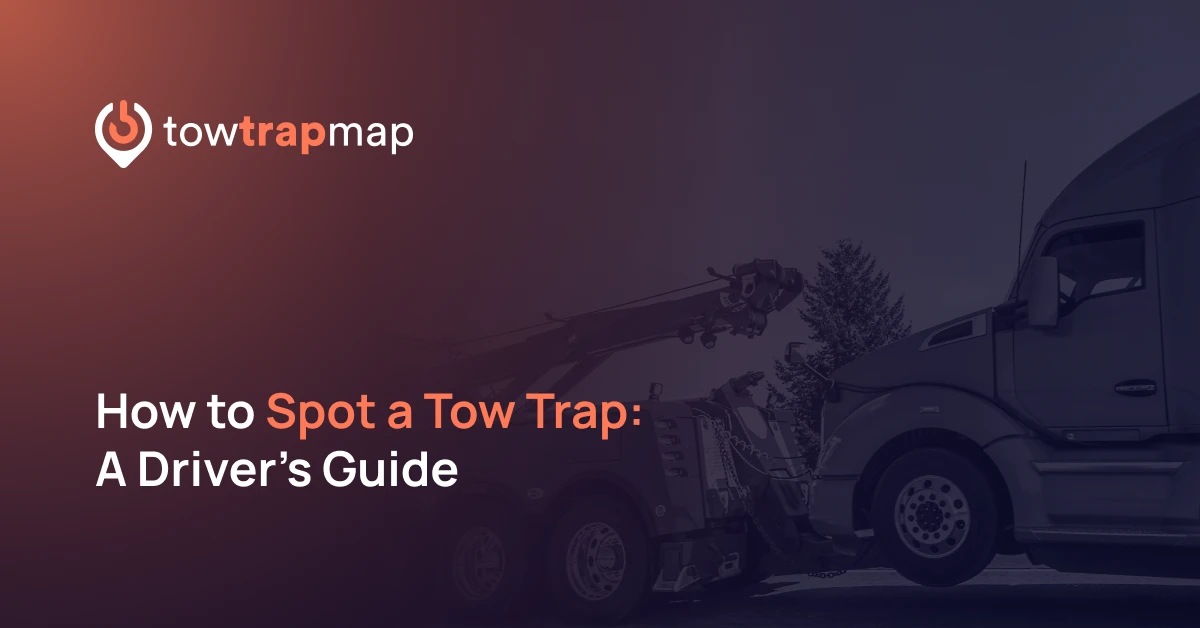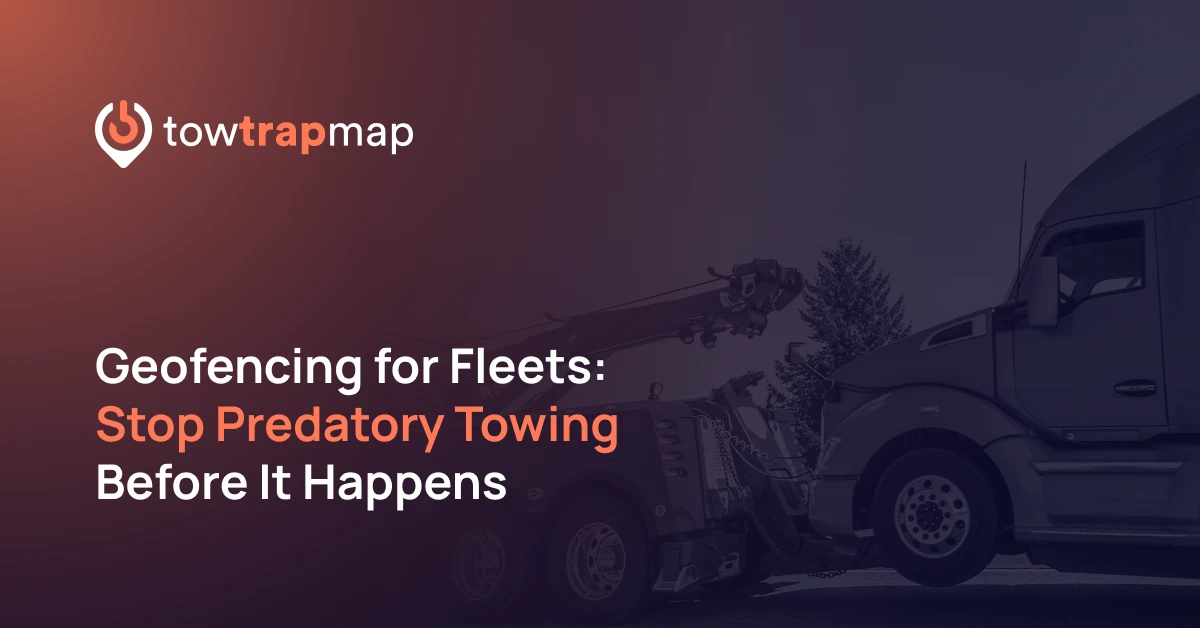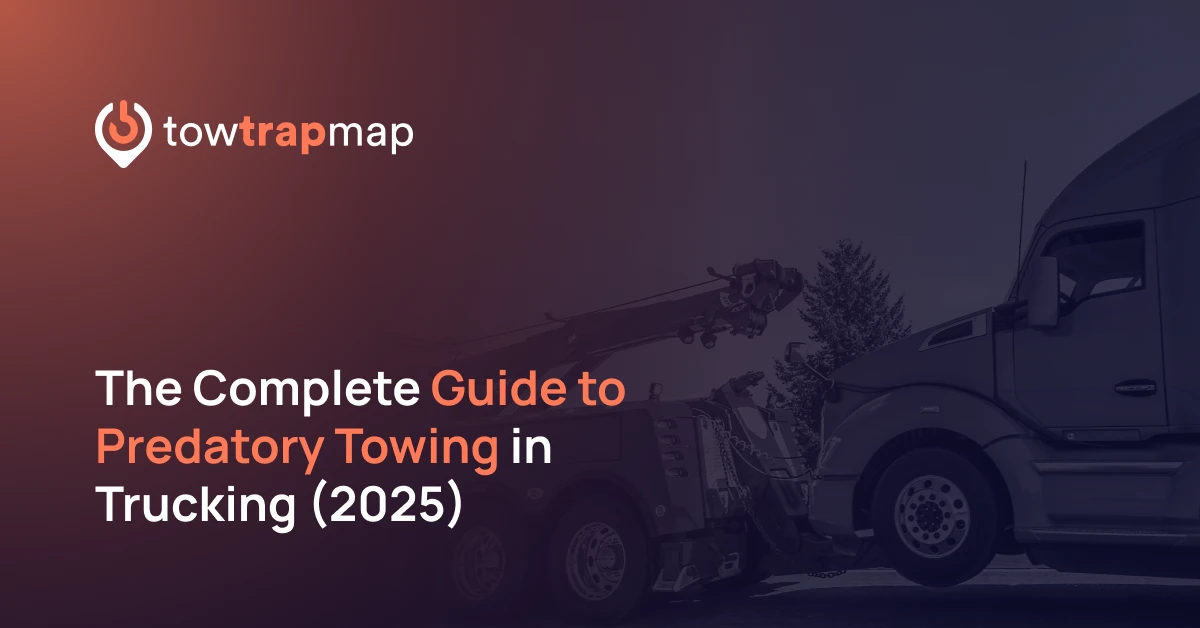Every trucker has heard the stories: a driver parks for a quick rest, comes back minutes later, and the truck is gone. Hours of delays and thousands of dollars later, the truck is finally released — but the damage is done.
These situations are no accident. They’re the result of tow traps — areas set up to maximize profit from predatory towing.
For a deeper explanation of what predatory towing is and how it impacts fleets, check out our Complete Guide to Predatory Towing.
For drivers, the best defense is awareness. The more you know what to look for, the less likely you’ll be caught in one of these traps.
What Exactly Is a Tow Trap?
A tow trap is any location — a parking lot, street corner, or warehouse zone — where towing companies set up conditions that almost guarantee trucks will be towed.
These areas are often:
Poorly marked with hidden or confusing signs.
Patrolled aggressively by tow trucks waiting nearby.
Managed by companies that charge exorbitant fees once a truck is hooked.
Tow traps thrive because of a perfect storm: scarce truck parking, weak enforcement, and desperate drivers needing rest or space.
Warning Signs of a Tow Trap
Hidden or Confusing Signage
One of the most common tactics is unclear signage.
Signs placed too high to see from the cab.
Signs blocked by trees, poles, or other vehicles.
Wording designed to confuse: “Authorized Parking Only” without defining who’s authorized.
Small print that no tired driver will notice after a 12-hour shift.
If you can’t clearly tell where you’re allowed to park, assume it’s risky.
Aggressive Spotters or Patrol Trucks
Drivers often report tow trucks circling lots like sharks. In some cases, “spotters” — people hired to call in tows — notify companies the moment a truck pulls in.
Some fleets have reported trucks being hooked in under 10 minutes of parking.
If you see tow trucks idling near an otherwise quiet lot, it’s a red flag.
Cash-Only or Offsite Tow Yards
Another giveaway comes after the tow:
Yards that only accept cash payments (often thousands of dollars).
Yards located far outside the city, making retrieval a logistical nightmare.
These practices aren’t just inconvenient; they’re designed to trap drivers in desperate situations where they have no choice but to pay.
Too-Empty Lots in Busy Areas
If a lot near a busy warehouse, port, or industrial area is completely empty, that’s a sign other drivers are avoiding it.
Lots that seem “too good to be true” usually are. Ask yourself: why would there be so much free space in a high-demand area? Chances are, it’s a known tow trap.
Exorbitant Release Fees
Even when a driver retrieves their truck, the fees can be outrageous.
$200–$300 daily storage fees are common.
“Gate fees” charged just to release the truck.
Inflated “administrative” costs that pad the bill.
When a single tow ends up costing $6,000–$9,000, it’s not a mistake — it’s a business model.
Learn more about the hidden financial toll of predatory towing.
Real-World Examples from North America
Tow traps aren’t unique to one city — they’re everywhere. Some of the most reported regions include:
Chicago, Illinois: Private lots near industrial corridors with hidden signage.
Toronto, Ontario: Aggressive patrol trucks circling driver-heavy zones.
Los Angeles, California: Scarcity of parking near ports creates prime trap locations.
Houston, Texas: Drivers report unclear signs near warehouses leading to instant tows.
Each of these cities has generated public complaints, lawsuits, or media investigations — proof that the issue is widespread.
What Drivers Can Do If They Suspect a Trap
Predatory towers rely on drivers being caught off guard. But there are practical steps you can take:
Scan for signs before parking. Walk or drive the perimeter if necessary.
Ask locals or other drivers. Trucking communities often know the worst spots.
Stick to designated truck stops when possible. It’s not always convenient, but it’s safer.
Avoid “too empty” lots in high-demand areas. If it feels off, it probably is.
Report suspicious locations. Sharing your experience helps the next driver avoid it.
How Reporting Protects the Next Driver
This is where community comes in. Drivers who report tow traps are building a shared shield against predatory towing.
On TowTrapMap:
Reports are moderated and added as pins on a shared map.
Geofences are drawn around risky lots.
Fleets will be able to integrate these geofences into systems like Samsara, Geotab, and Motive to protect drivers in real time.
Every report makes the database stronger — and every submission is one less driver caught unaware.
Call to Action
Tow traps only succeed when drivers are in the dark. By learning to recognize the warning signs — and reporting them — truckers protect themselves, their fleets, and the entire community.
👉 Think you’ve seen a tow trap? Submit it here → TowTrapMap.com/report
Because every report protects the next driver. 🚛



